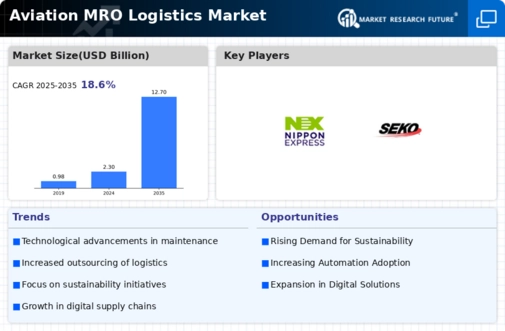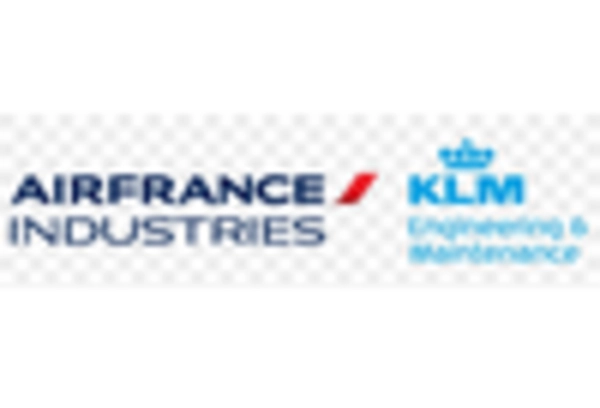Market Trends
Key Emerging Trends in the Aviation MRO Logistics Market
The Aviation Maintenance, Repair, and Overhaul (MRO) Logistics market is undergoing significant transformations, shaped by key trends that reflect the dynamic nature of the aviation industry and the growing demand for efficient MRO services. This market, critical for ensuring the operational readiness of aircraft, is influenced by factors such as technological advancements, globalization, and a heightened focus on cost-effective and timely logistics solutions. One primary driver influencing the Aviation MRO Logistics market is the increasing complexity of modern aircraft and the need for advanced MRO services. As aircraft systems become more sophisticated, the MRO logistics sector is witnessing a rising demand for specialized services, tools, and components. This trend is driven by the aviation industry's commitment to ensuring the safety, reliability, and compliance of its fleets with evolving regulatory standards.
Technological advancements play a pivotal role in shaping the trends within the Aviation MRO Logistics market. The integration of digital technologies, such as Internet of Things (IoT) devices, sensors, and data analytics, enhances the efficiency of MRO processes. Real-time monitoring of aircraft components, predictive maintenance analytics, and inventory optimization contribute to reducing downtime and improving overall MRO logistics performance. The industry's adoption of advanced technologies aligns with the broader trend of digitalization in aviation operations.
Globalization and the expansion of air travel contribute to the growth of the Aviation MRO Logistics market. Airlines and MRO service providers are establishing global partnerships and networks to ensure comprehensive and seamless logistics support. This trend is particularly evident in the growing number of collaborations between MRO facilities across different regions, allowing for the efficient movement of aircraft parts, tools, and personnel to meet maintenance needs on a global scale.
The market is witnessing a shift towards a more integrated and comprehensive approach to MRO logistics. Aerospace companies are increasingly looking for end-to-end solutions that cover the entire MRO supply chain, from spare parts procurement to transportation and distribution. The integration of MRO logistics services streamlines processes, reduces lead times, and enhances overall operational efficiency, addressing the industry's demand for comprehensive and cost-effective solutions.
The Aviation MRO Logistics market is experiencing a surge in demand for sustainable and eco-friendly practices. As the aviation industry embraces environmental sustainability goals, there is a growing emphasis on green logistics solutions. MRO logistics providers are adopting environmentally friendly packaging, optimizing transportation routes to reduce emissions, and exploring innovative approaches to minimize the environmental impact of their operations. This trend aligns with the broader aviation industry's commitment to reducing its carbon footprint and promoting sustainability.
Collaborations and partnerships among MRO service providers, airlines, and logistics companies are shaping the Aviation MRO Logistics market. Strategic alliances facilitate the pooling of resources, expertise, and infrastructure, enabling more efficient and cost-effective MRO logistics solutions. Collaborative efforts address the challenges of complex supply chains, global operations, and the need for flexible and responsive logistics services in the aviation MRO sector.

















Leave a Comment